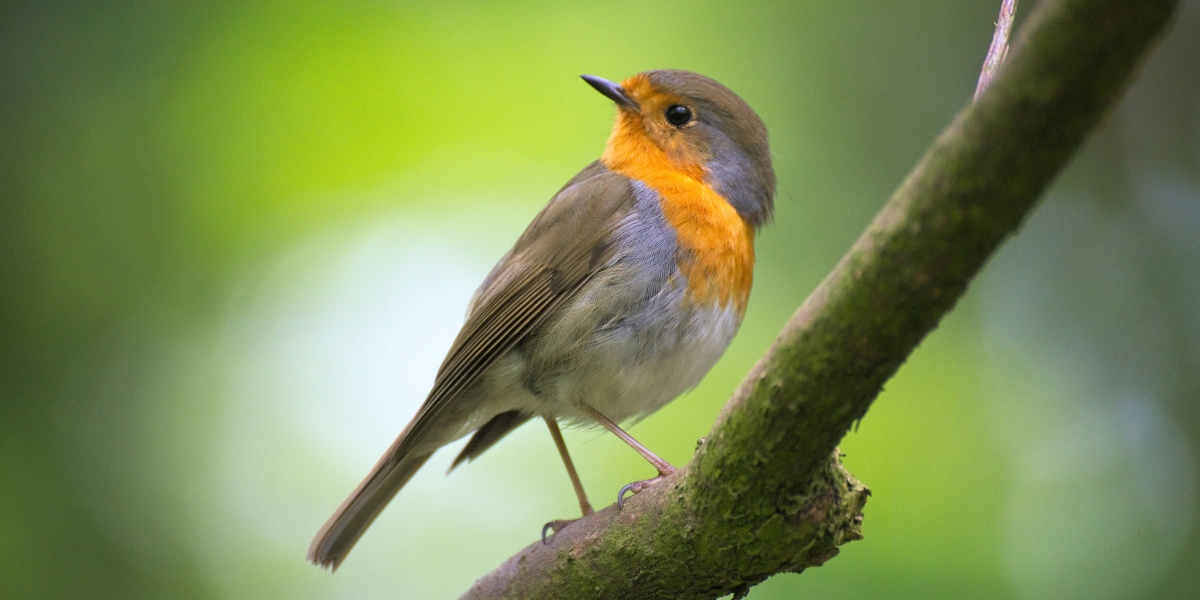For most birds, the answer is they do not have a traditional penis. However, some bird groups like waterfowl (ducks, geese, and swans) and ostriches do have a well-developed phallus. The avian penis plays an important role in transferring sperm efficiently during mating. Read on to learn all about what birds have a penis and how it has evolved for different reproductive strategies.
Bird Reproduction and Genitalia
To understand the function of the avian penis, it helps to first look at how fertilization and egg-laying occur in birds.
Most Birds Don’t Have a Penis
The reproductive system of most bird species lacks an external penis or vagina. Instead, male and female birds have a single opening called a cloaca used for defecation as well as mating.
When it’s time to mate, the male mounts the female, and their cloacas come into contact. The male ejaculates sperm from his cloaca directly into the female’s in what’s known as a “cloacal kiss.”
Without a penis, birds don’t truly copulate. The sperm stored inside the female’s oviduct may then fertilize eggs as they pass through on their way to being laid.
Waterfowl and Ostriches Have a Penis

However, some primitive bird groups like waterfowl (ducks, geese, and swans) and ratites (ostriches, emus, rheas) do possess a true phallus. Most other modern species do not.
The avian penis allows forceful ejaculation of sperm directly into the female’s reproductive tract, giving the male more control over transferring sperm. This may provide advantages in competitive mating situations.
Cloacas and Cloacal Kisses

All male birds still possess a cloaca, even if they also have a penis. The cloaca stores urine and serves as an outlet for feces. In birds with a penis, it houses the base of the phallus when not erect.
Birds mate by positioning their cloacas close together in a “cloacal kiss.” The penis, if present, everts out from the male’s cloaca to allow sperm transfer into the female.
Waterfowl Species With a Penis
Male ducks, geese, and swans of most species are all equipped with a penis for reproductive purposes. Here’s a breakdown of penis presence in common waterfowl groups:
Ducks

Male ducks have a corkscrew-shaped penis that emerges from the cloaca during mating. Some examples include mallards, pintails, wigeons, teals, and wood ducks. The length and complexity of the helical penile shape varies between duck species.
Ducks are perhaps the most notorious for their elongated, sometimes barbed penises, which may help males compete to fertilize females. Up to a third of duck matings are forced rather than consensual.
Geese

The male goose also has a penis that becomes erect during the breeding season. Canada geese and snow geese both utilize a penis during mating, as do other wild and domestic goose species.
Since geese mate more monogamously than ducks, their penises tend to be simpler and less pronounced. But they are still critical for directing ejaculate into the oviduct of their mates.
Swans

Male swans develop a straight penis each breeding season to deposit sperm into the female. Most swan species mate monogamously, so their penis is relatively short and simple.
The trumpeter swan has the largest penis of any North American waterfowl, which may play a role in its vigorous mating displays. In Europe, the mute swan has an elaborately coiled penis, like other swans.
Function of the Avian Penis
In waterfowl and ratites, the penis serves several key functions:
Transferring Sperm to the Female
The core purpose of the avian penis is to enable the efficient transfer of sperm from the male directly into the female’s oviduct. This ensures sperm will be present to fertilize eggs as they travel through the tract before being laid.
The forceful ejaculation of sperm gives males a better chance of passing on their genes than passive cloacal kissing does. This selective advantage likely explains why ducks, geese, swans, and ostriches retained the penis over time.
Competing for Females in Mating Season
For species like mallard ducks, where females mate with multiple males, the penis helps males compete to fertilize eggs. Longer, more elaborate penises can deposit sperm deeper in the female and may give males a competitive edge.
Drakes forcibly use their penis to copulate with females and outcompete other male ducks during the frenzied breeding season. Having a penis allows male ducks to dominate matings.
Navigating the Female’s Reproductive Tract
Corkscrew and brush-tipped penile shapes allow male waterfowl to traverse the twists and turns of the female’s oviduct. A longer penis can probe deeper to deposit sperm closer to mature follicles that are ready for fertilization.
The helical geometry may help the male navigate tight spirals and pockets within the female’s reproductive anatomy. This ensures sperm is delivered exactly where it needs to go to reach and fertilize eggs.
Weird and Wild Avian Penis Adaptations
The phalluses of waterfowl exhibit some rather bizarre anatomical adaptations. A few of the strangest penis qualities in birds include:
Corkscrew Shape
Ducks, swans, and some geese have penises with a prominent corkscrew or helical shape. This spiral geometry allows them to more easily traverse the long, coiled oviduct of female waterfowl during copulation.
The length and complexity of the corkscrew vary significantly between different duck species. For example, the Argentine lake duck has the most elaborate spiral penis of all vertebrates.
Brush-Tipped
The penis of many ducks culminates in a brush-like tip comprised of dense filaments. It is hypothesized that this brush functions like a piece of velcro to help attach the male’s penis inside the female’s reproductive tract.
The explosive eversion of the brush-tipped penis and the anchoring filaments may function together to deposit sperm further inside the female duck.
Explosive Eversion
When male ducks become sexually aroused, their penis everts explosively out of the cloaca in less than half a second. This rapid projection and immediate erection likely help overcome female resistance during forced matings.
Ducks, geese, and swans all have penile muscles to support vigorous eversion and allow energetic copulation. This ensures the successful insemination of sperm into female waterfowl.
Ostrich Penis and Mating Habits
In ratites like ostriches, the penis plays an important role in their distinctive mating habits.
Large and Long-Lasting
The ostrich has one of the largest penises relative to body size of any animal. When fully erect, it measures up to 42 inches long. It also differs from waterfowl by having a blunter, smoother tip rather than a brushy end.
Ostrich intercourse can last over half an hour, enabled by specialized penis muscles. Their impressive stamina outlasts the typical 15-second duck mating.
Dominant Males Mate with Multiple Females
Ostrich society is polygamous, with a dominant male breeding with several females each season. The long, sturdy penis likely evolved to facilitate copulating with multiple mates in succession.
Females submit to the dominant male for mating, whether they are initially
receptive or not. The male ostrich uses his large penis to forcibly copulate with females and maintain his status.
Color Indicates Sexual Maturity
An adult male ostrich’s penis is bright pink, turning even deeper magenta at peak sexual maturity. The vibrant color signals the male’s readiness to mate and may attract females.
In contrast, the juvenile male’s phallus is pale pinkish-grey. As they mature, it gradually takes on a brighter pink flush each mating season.
Other Unique Bird Mating Strategies
Beyond waterfowl and ostriches, some other unusual bird mating habits include:
Forced Copulations
Ducks are notorious for male rape through the forceful use of their corkscrew penis. Other birds, like dunnocks and European starlings, also regularly employ forced copulations.
Even without a penis, male birds can mount females and cloacal kiss them against their will to pass sperm. Forced matings allow males to mate opportunistically.
Cloacal Kissing
Most birds rub their cloacas together to transfer sperm in a “cloacal kiss.” Both male and female reproductive fluids are passed between cloacas.
Cloacal kisses occur rapidly, sometimes only lasting a second or two. But they are still effective at delivering sperm to fertilize eggs.
Extra Pair Copulations
Social monogamy is common in birds, but extra-pair matings are frequent too. Males often forcibly mate with females besides their social mate to produce extra-pair offspring.
Even in birds without a penis, males can succeed in siring chicks outside the pair bond through opportunistic cloacal kisses forced on other females.
People Also Read:
Conclusion
Most birds don’t have a penis, instead mating by brief cloacal kisses. But waterfowl (ducks, geese, and swans) and ratites (ostriches) uniquely possess a true phallus. The avian penis likely evolved to promote stronger sperm competition and allow vigorous copulations.
Corkscrew duck penises, explosive eversion, and brushy tips all help ensure sperm transfer into females. Ostrich penises are used for marathon copulations and dominance displays. Understanding the function of the bird penis provides fascinating insight into avian evolution and reproductive biology.
So next time you see a duck or ostrich, remember that they are members of a select bird group equipped with a specialized anatomical organ lost over time by other avian species. The weird world of animal phalluses is full of surprises!

